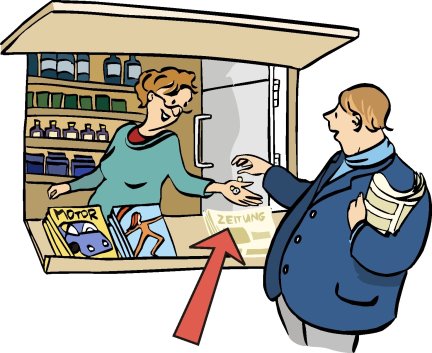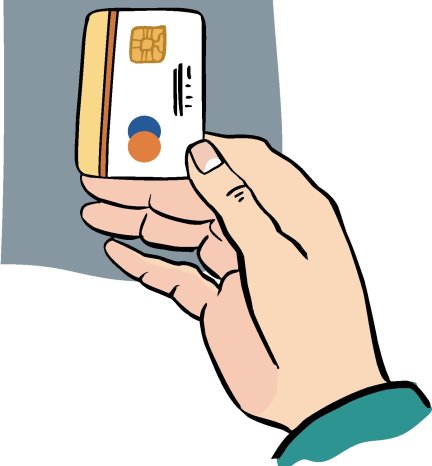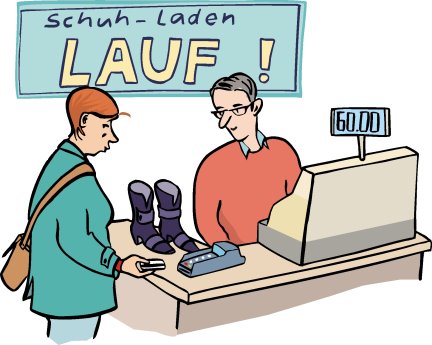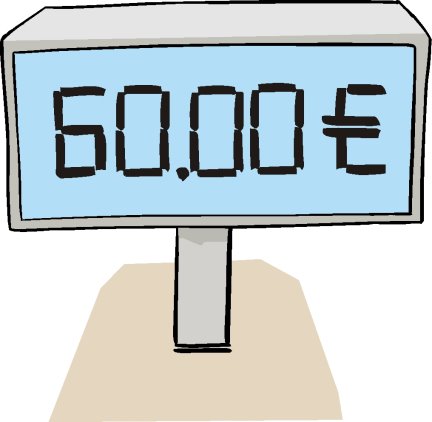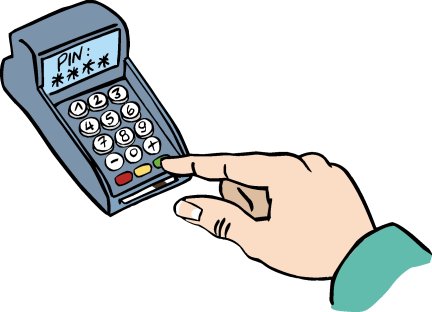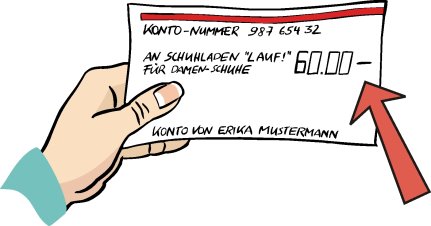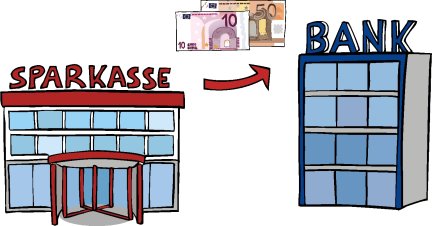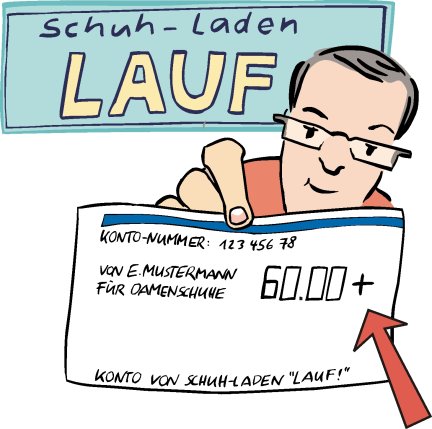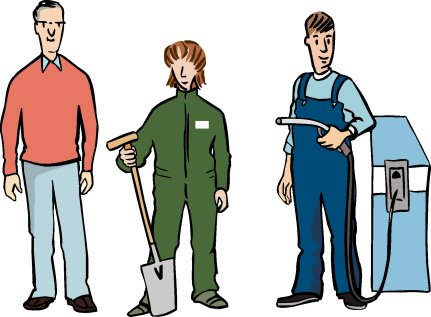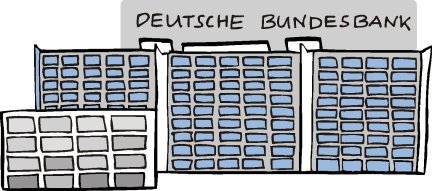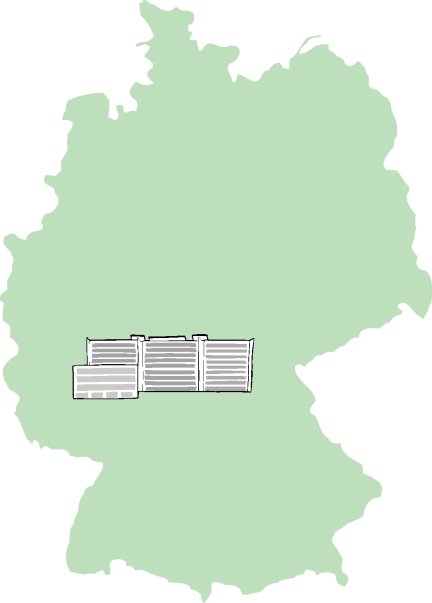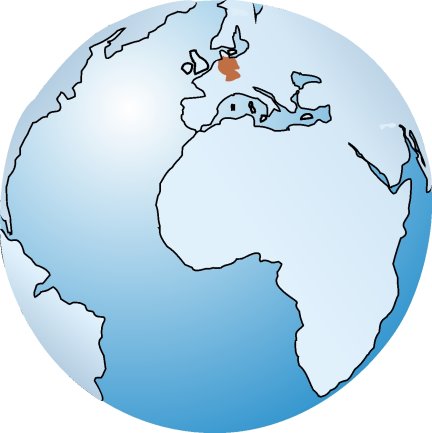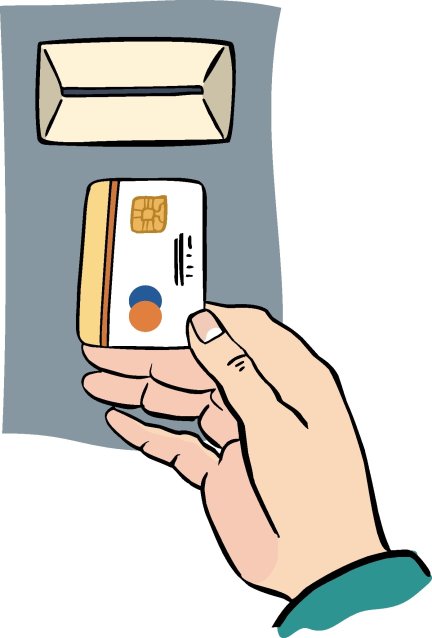
Paying with a bank card Information about Bundes-Bank. In easy-to-read format.
You often pay with banknotes or coins.
At the news stand, for example.
But sometimes you pay with a bank card.
Then you don’t use coins or banknotes.
At the till in a shop, for example.
It works like this:
You want to buy something.
Shoes, for example. You take the shoes to the till.
The sales assistant enters the price.
You type in the PIN number for your bank card.
Your PIN number is secret.
Your bank takes the money for the shoes out of your account.
You see this later in your bank statement.
That means you have less money in your account.
Your bank gives the money to the shoe shop’s bank.
The shoe shop’s bank then gives the money to the shoe shop.
The shoe shop now has this money in its account.
The person who receives the money is called the recipient.
In this case, it is the owner of the shoe shop.
But it can also be another person.
A person who you pay money to.
A gardener, for example. Or a petrol pump attendant.
You can also exchange money on the internet without using banknotes and coins.
For example, if you buy shoes online.
Exchanging money without using banknotes or coins is called a cashless payment.
In Germany, the Bundesbank takes care of cashless payments.
The Bundesbank supervises cashless payments in Germany.
And the Bundesbank arranges payments to other countries.
To Italy, for example.
Or to France.
A payment from Germany to a country very far away usually takes a little longer. For example, to Brazil or to Australia.
Illustrations: © Reinhild Kassing
